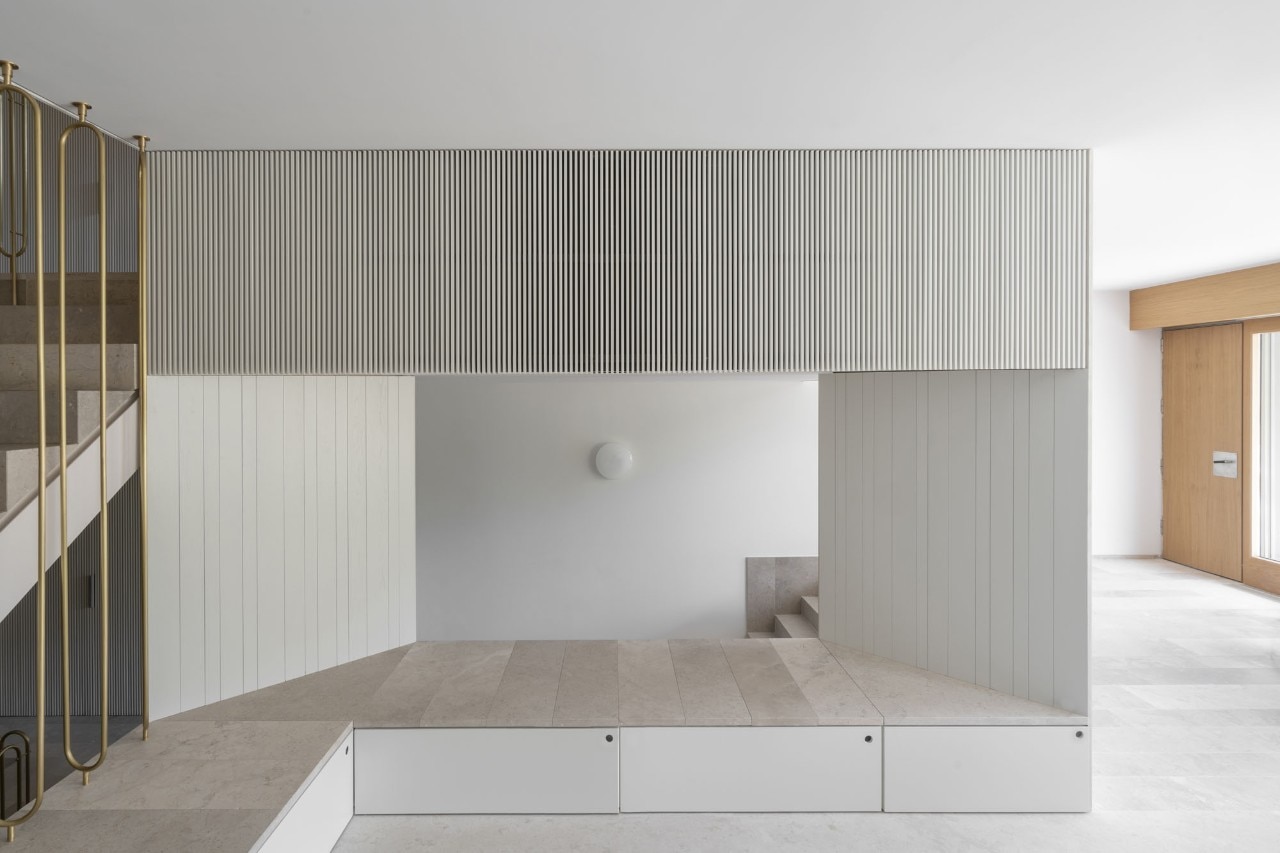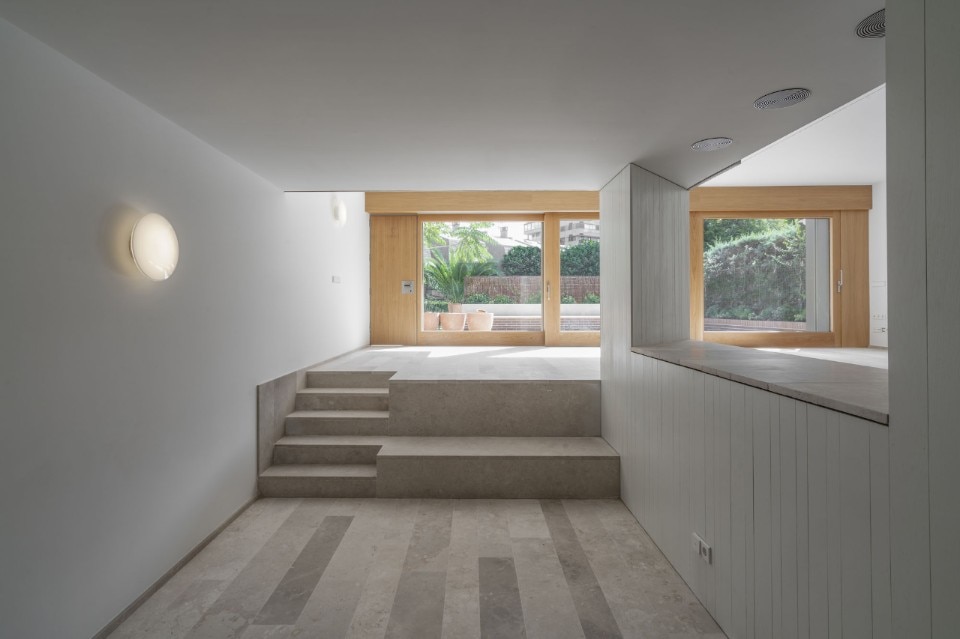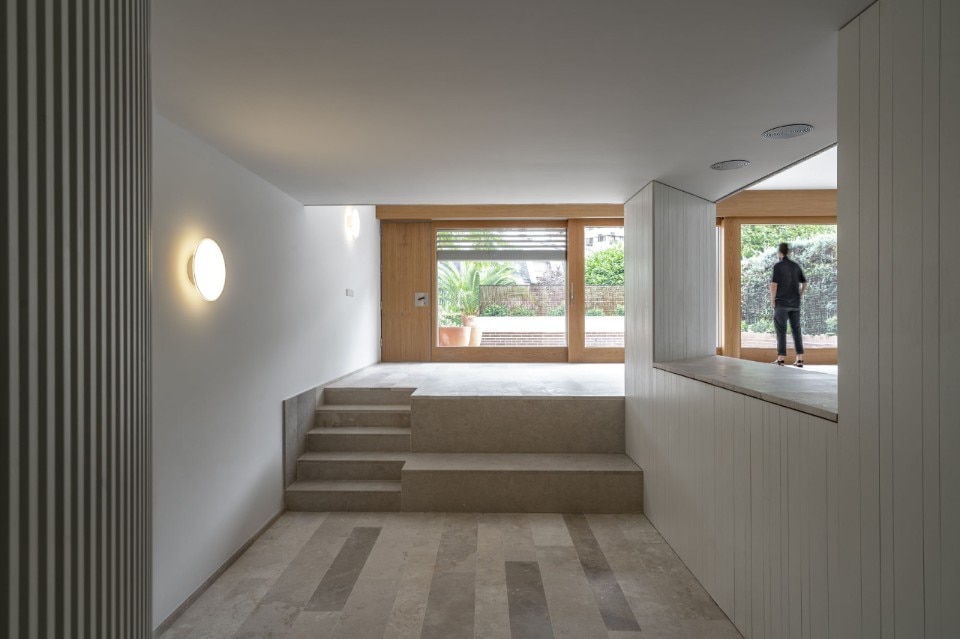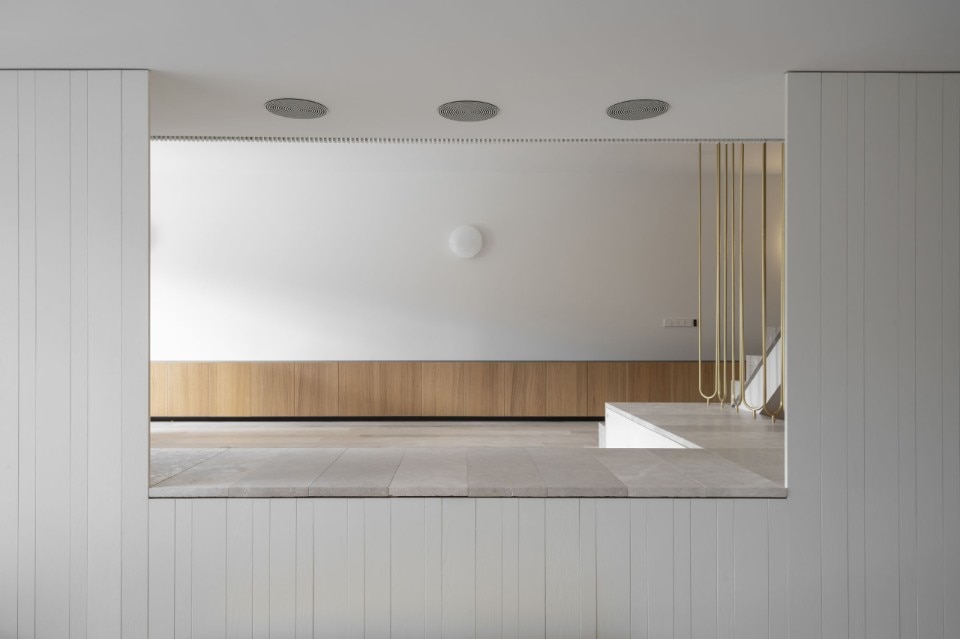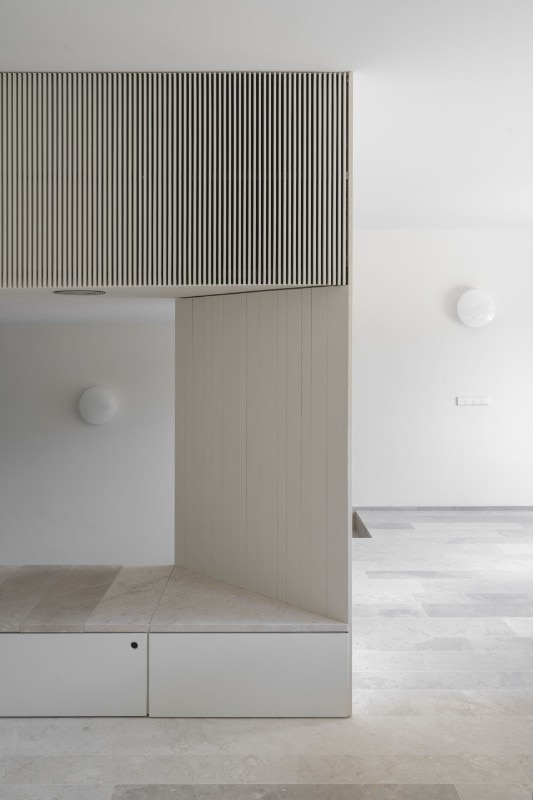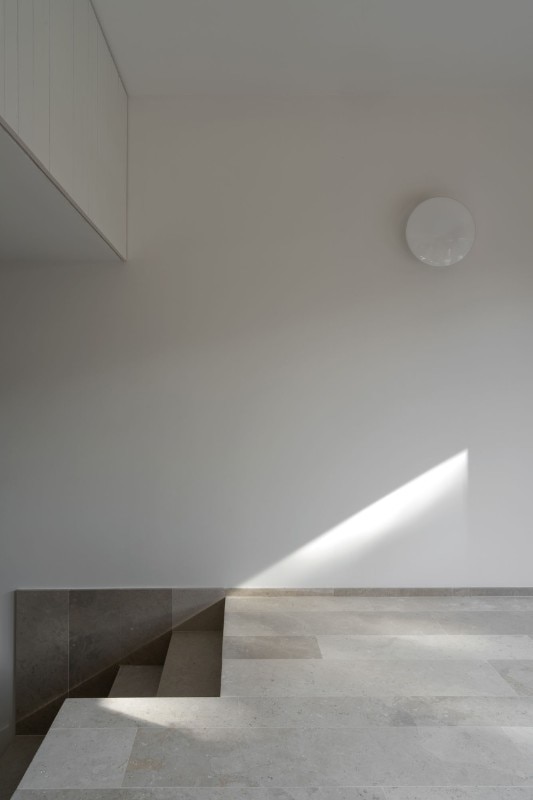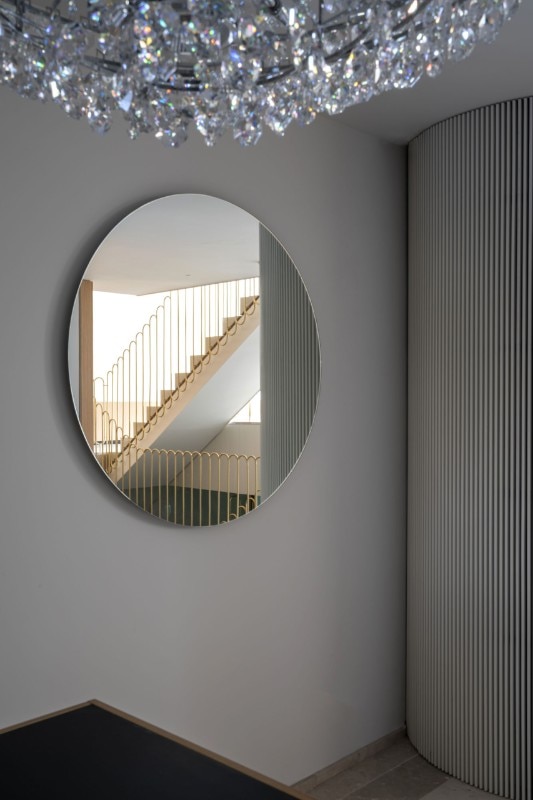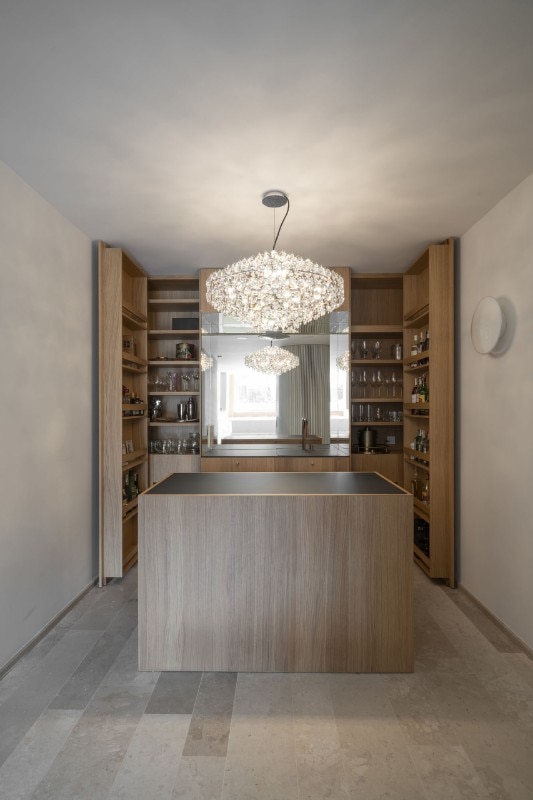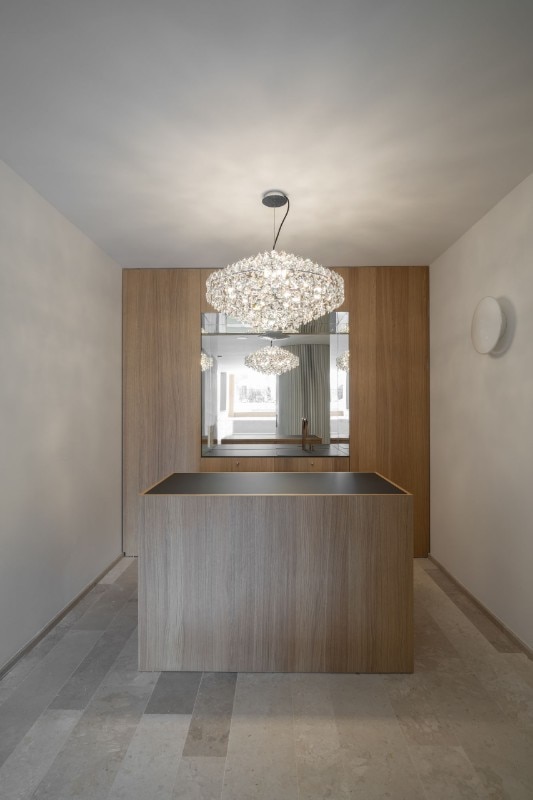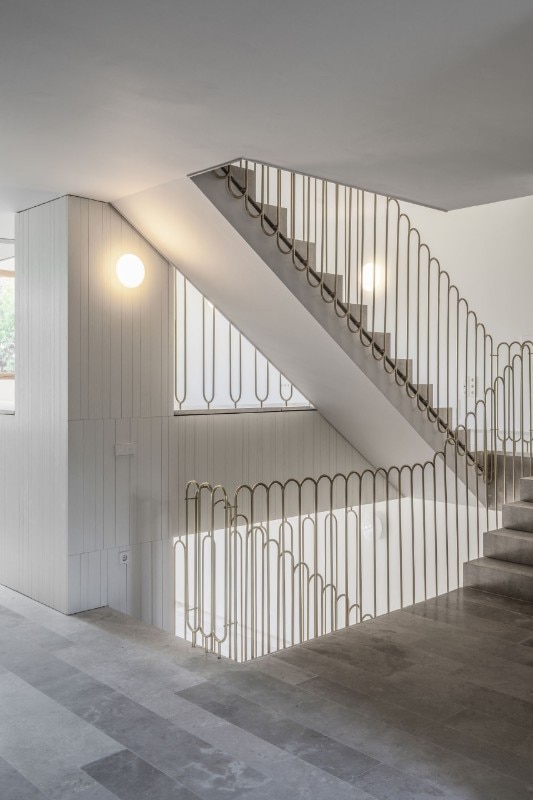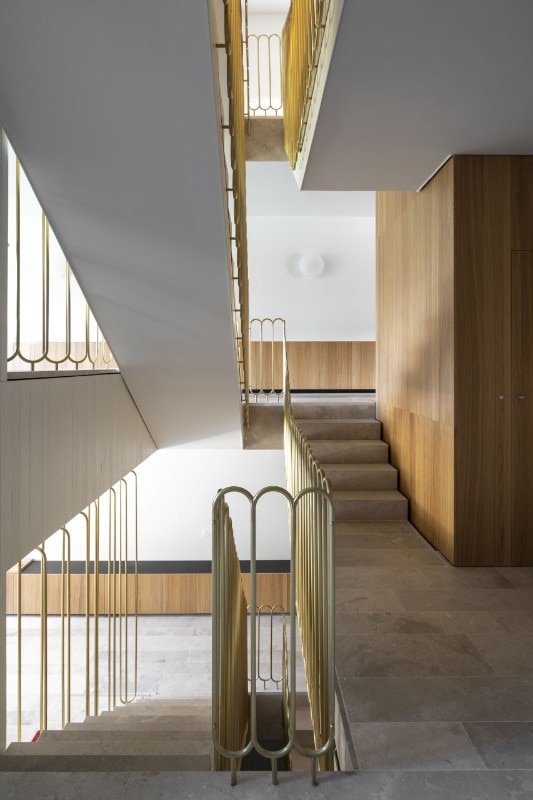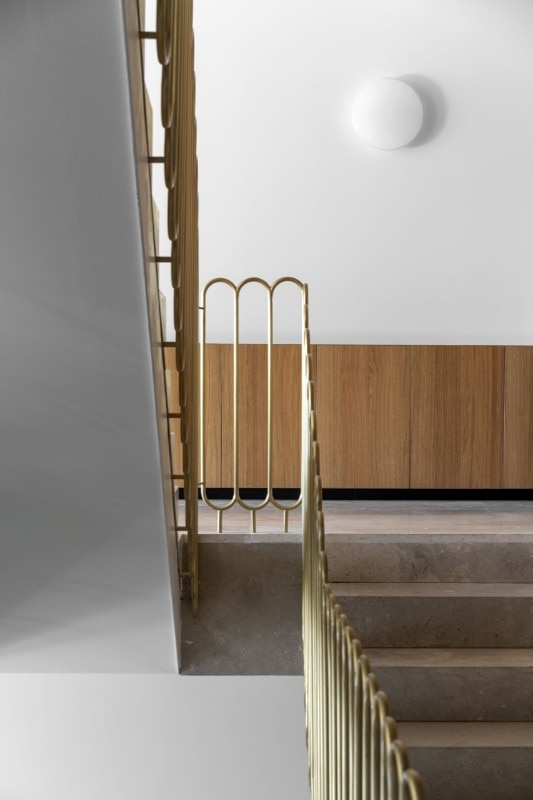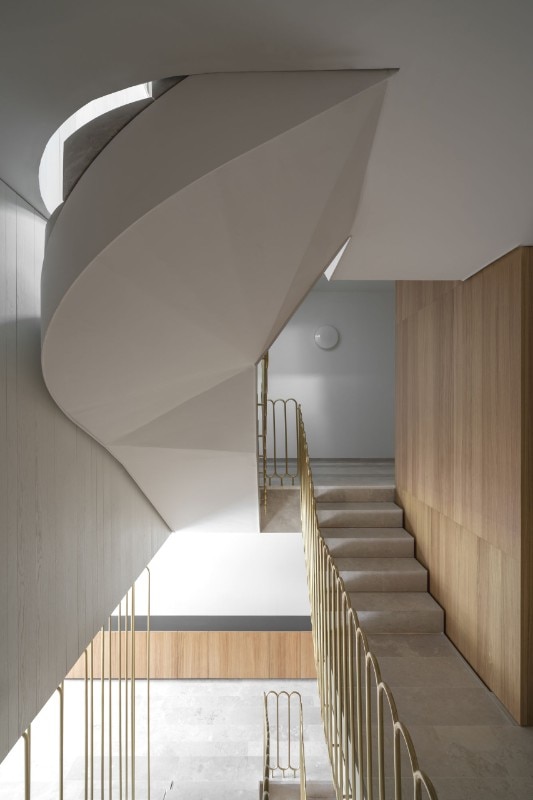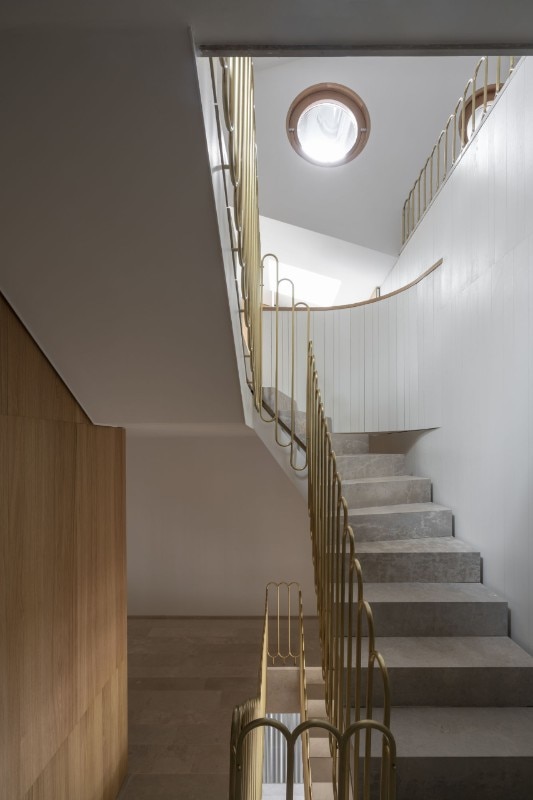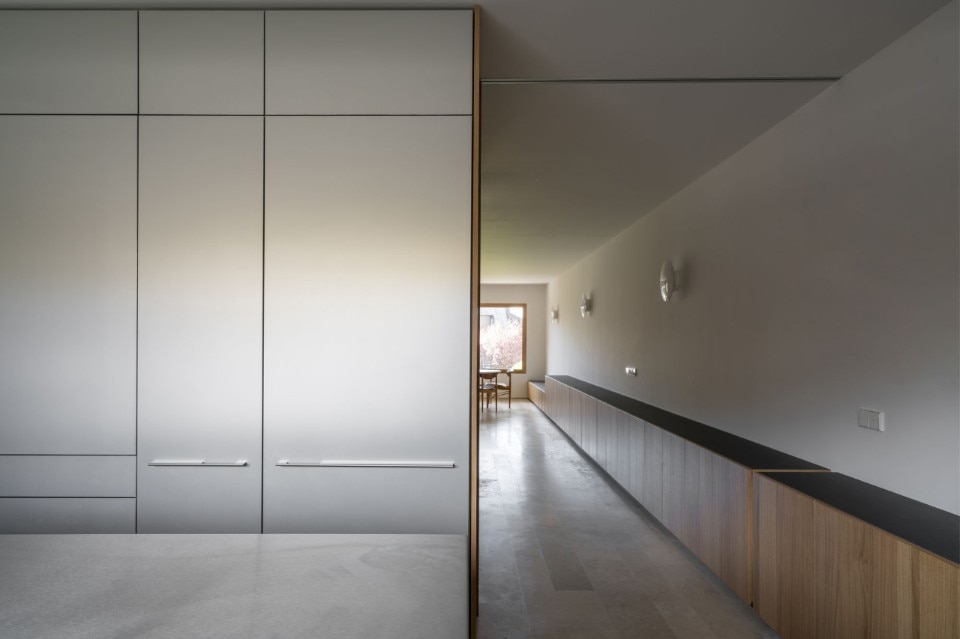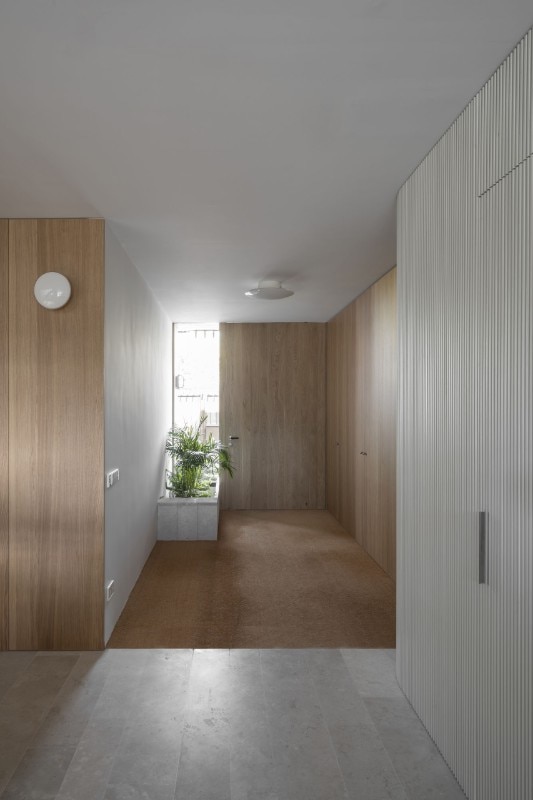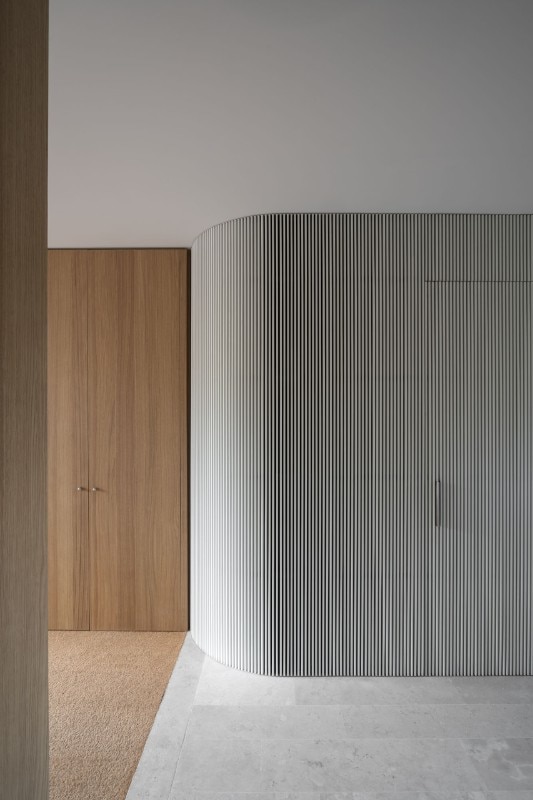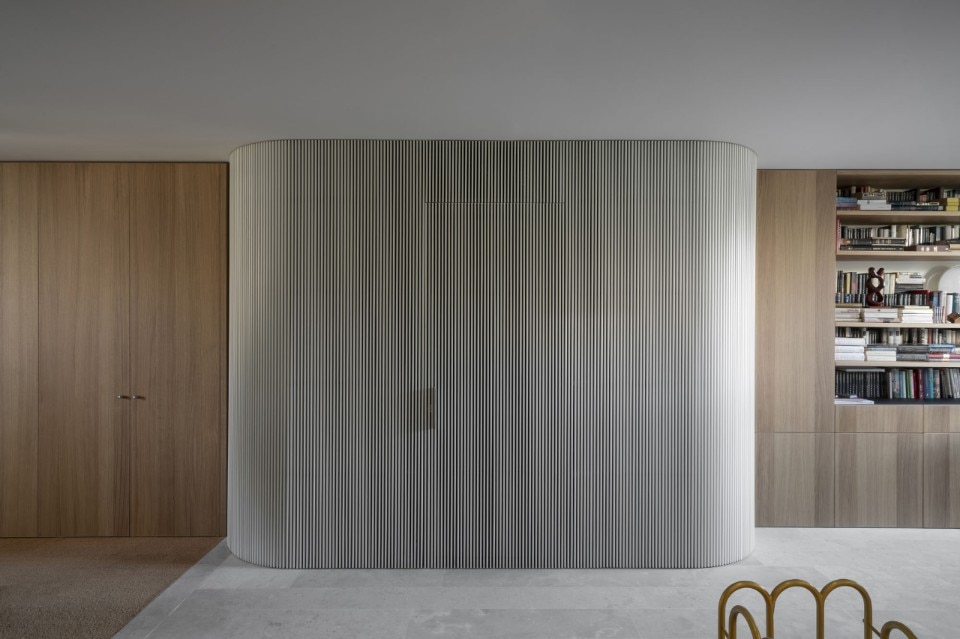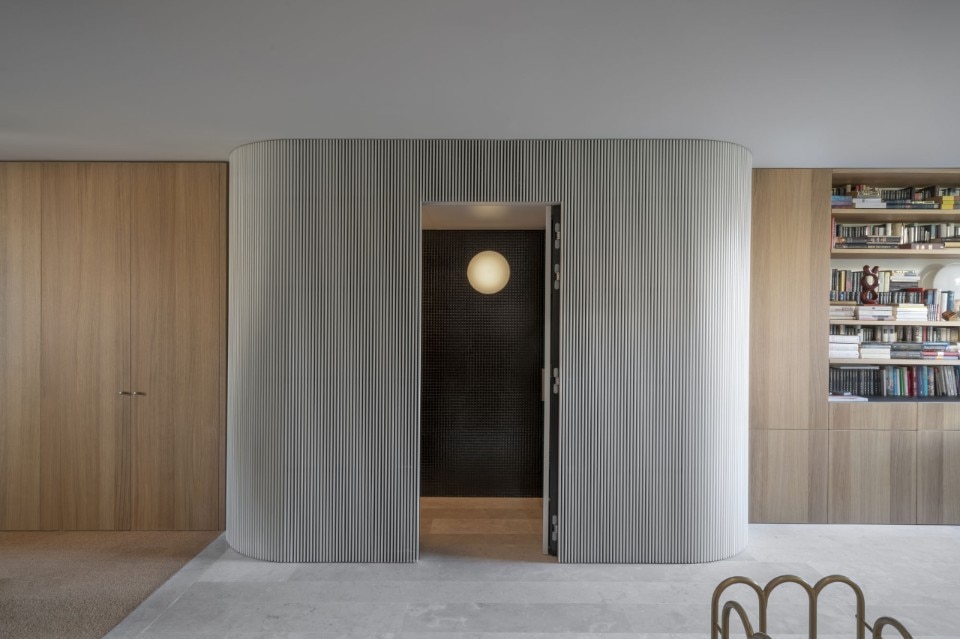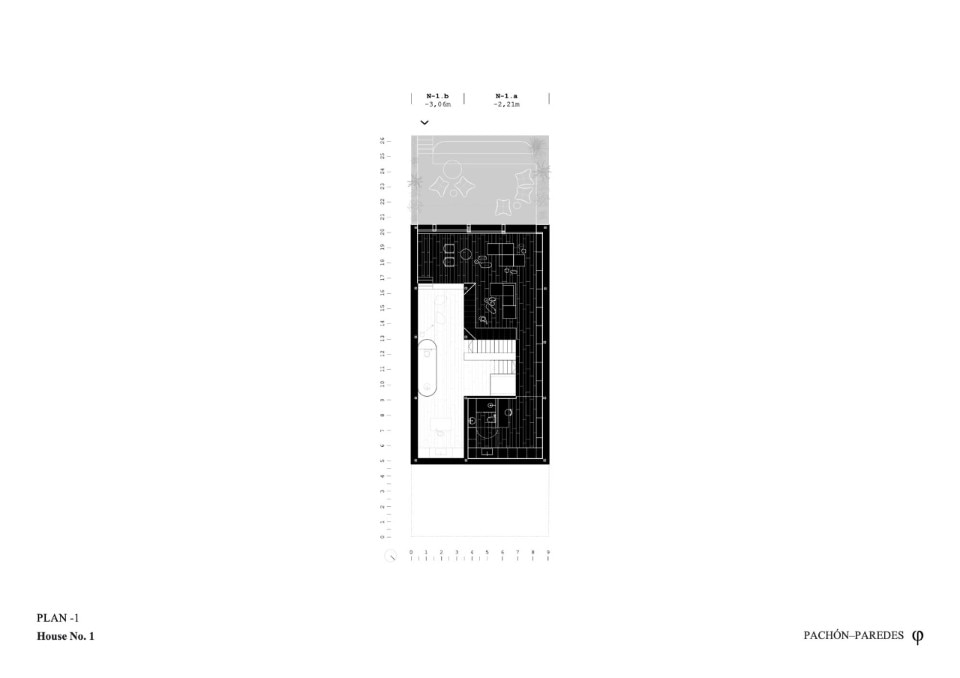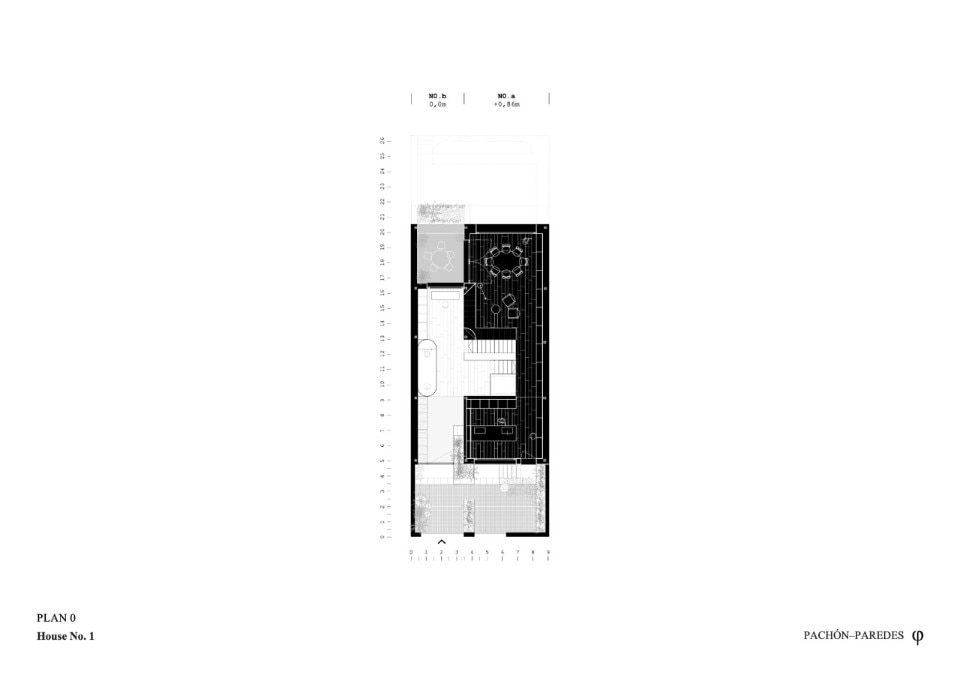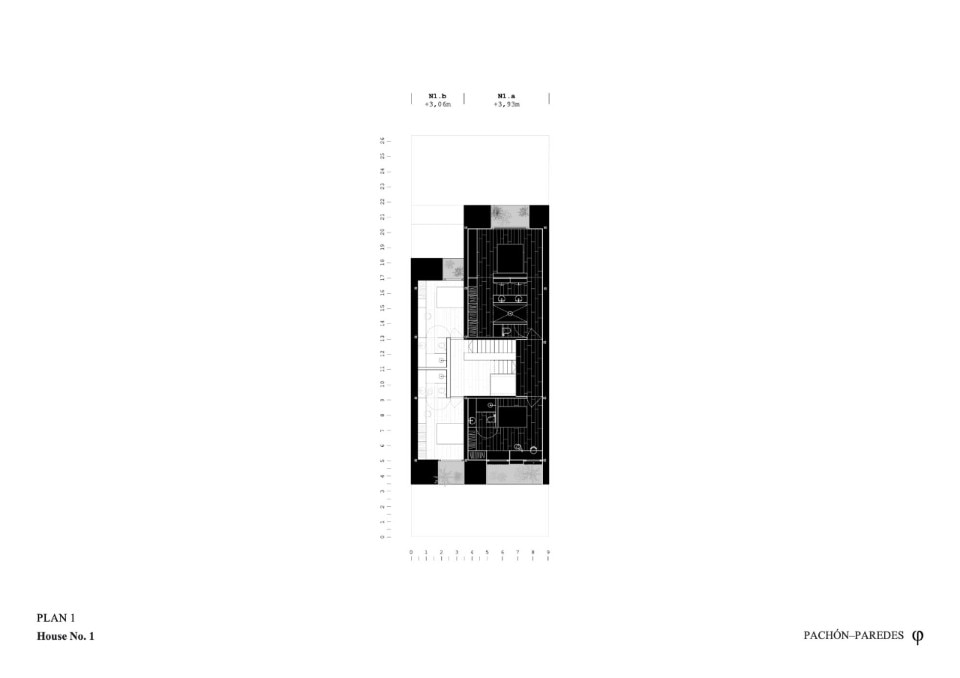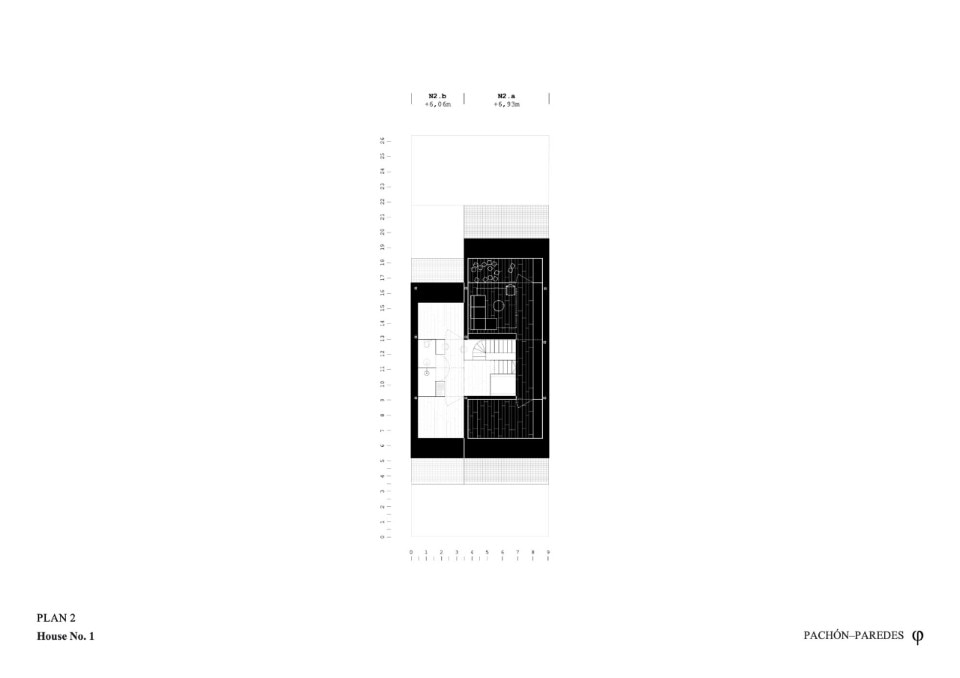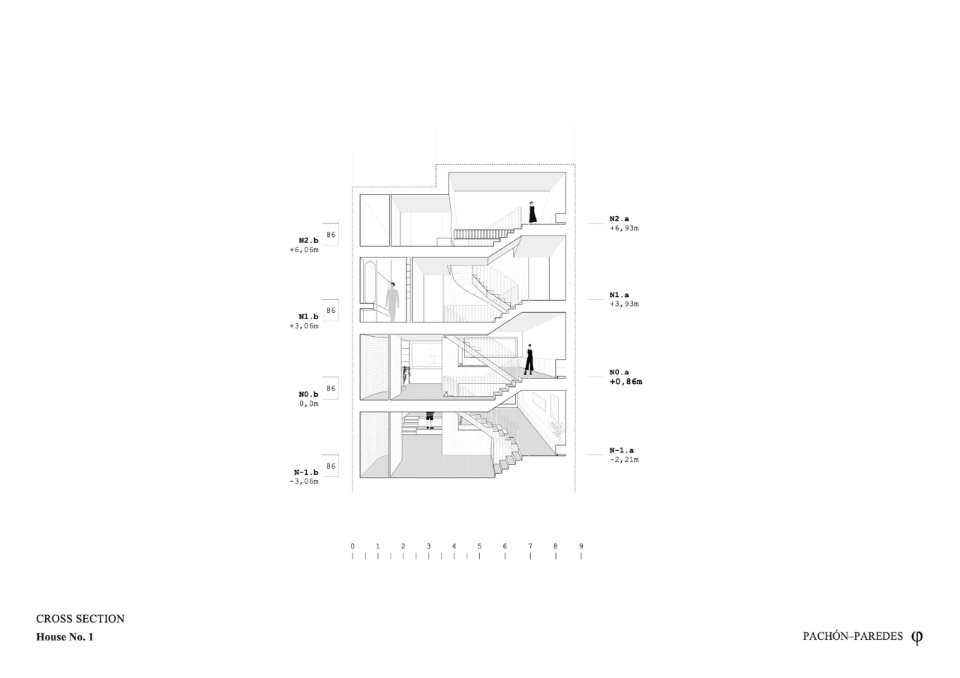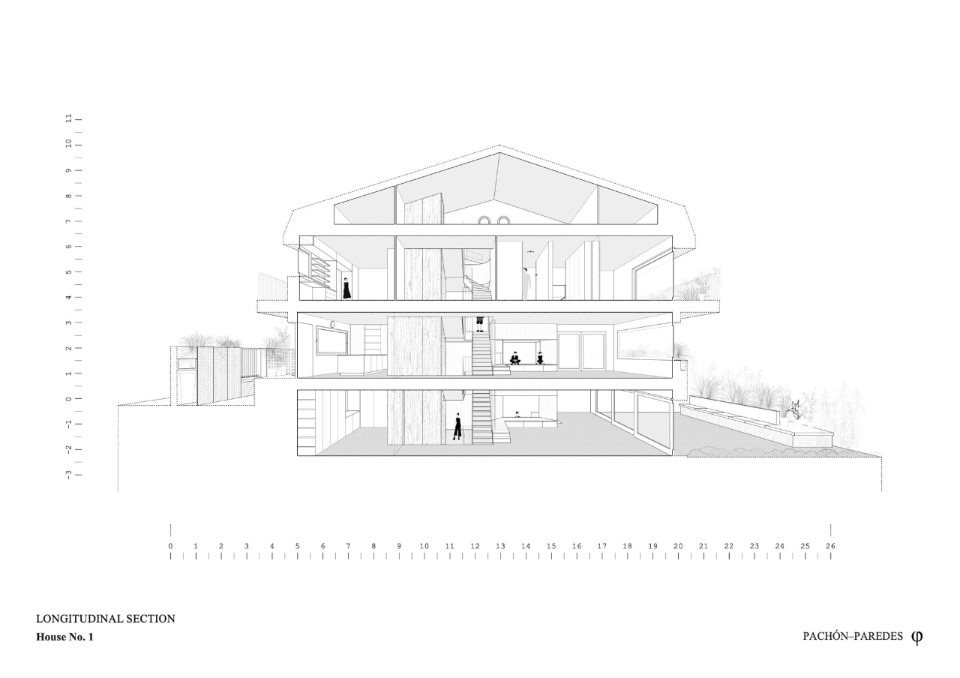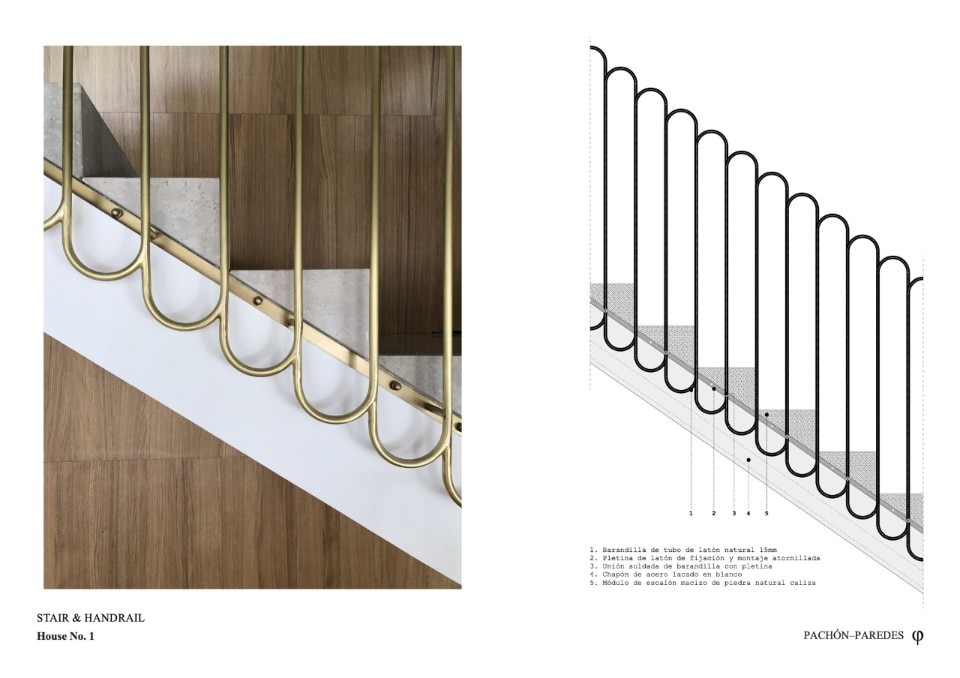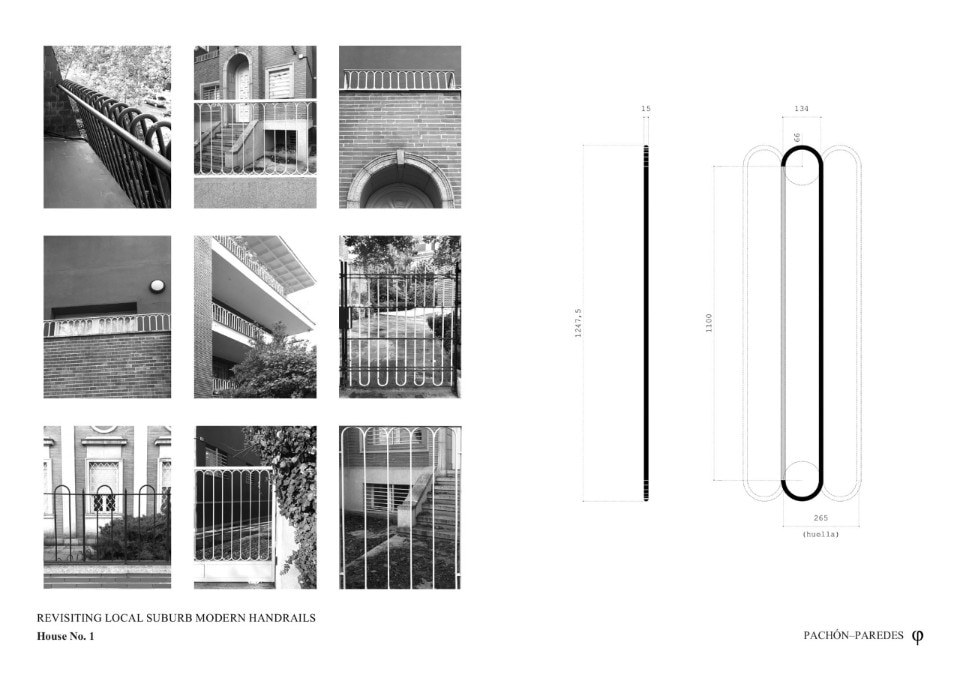Located in a residential neighbourhood in the north-east of Madrid, a dusky and rigidly structured house dating back to 1978 rediscovers an entirely new configuration thanks to the renovation and adaptation of spaces designed by Studio Pachón-Paredes.
The building, distributed over three floors and an attic, is characterised by a constrained distributional layout: each floor is divided into two zones with a difference in height of 86 cm, and a staircase located in the centre determining a strong caesura. However, what were originally obstacles have been converted into design possibilities, thanks to a project approach aimed at enhancing an airy and flexible spatiality tailored to the multiple needs of the clients.
After eliminating the dividing partitions, the studio has interpreted the house as a unified, open and fluid space where the staircase emerges as the new backbone of the composition and where the custom-made furniture offers new multi-functional solutions in the name of flexibility. Around the staircase, furnishing elements containing shelves, seating and interior windows are articulated, animating the vertical distribution and favouring “hybrid” uses of the spaces and visual continuity between rooms.
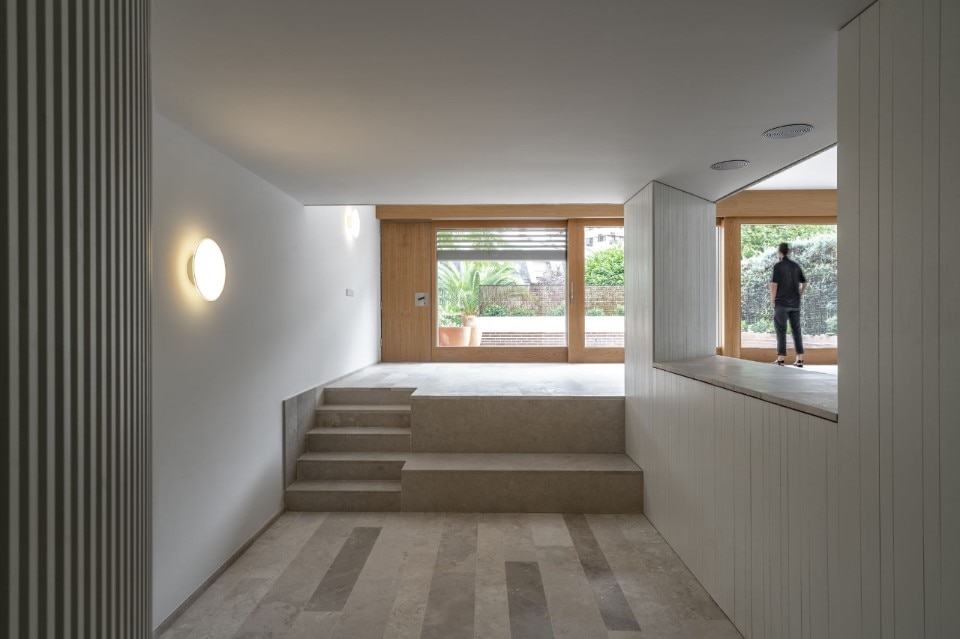
A custom piece of furniture, leaning 16 m long against the perimeter wall, unfolds as a domestic "infrastructure" and accommodates artworks, storage areas and installations, acting as a link between sequenced rooms.
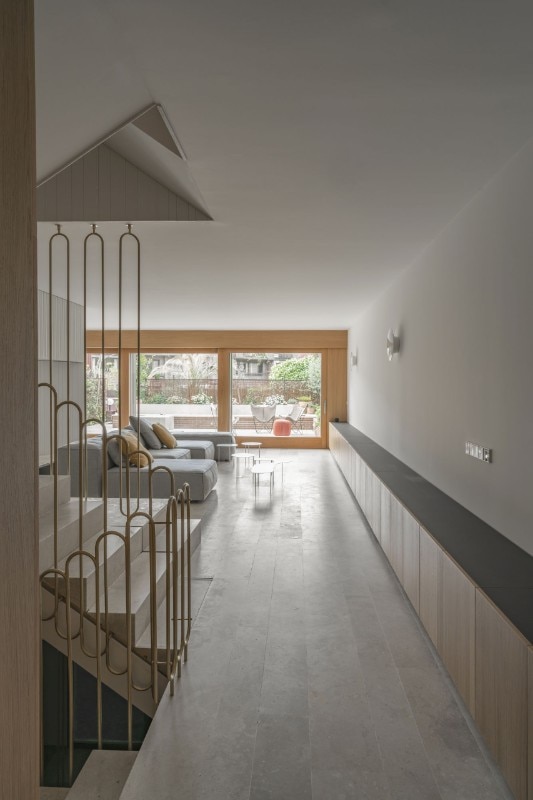
The studio has conceived the space as a neutral canvas that the owners could customise with their own chromatic and expressive choices: in the interiors, the materials chosen — from the light-coloured plaster of the surfaces, to the Campaspero stone laid with different textures in the flooring, to the wood of the furniture and wall coverings — capture the warmth of the light and give the home a clear and welcoming aura. Construction details inspired by the figurative tradition of the neighbourhood — such as the rounded brass banister of the staircase — refer to a concept of living flavoured by an intimate and domestic mood.
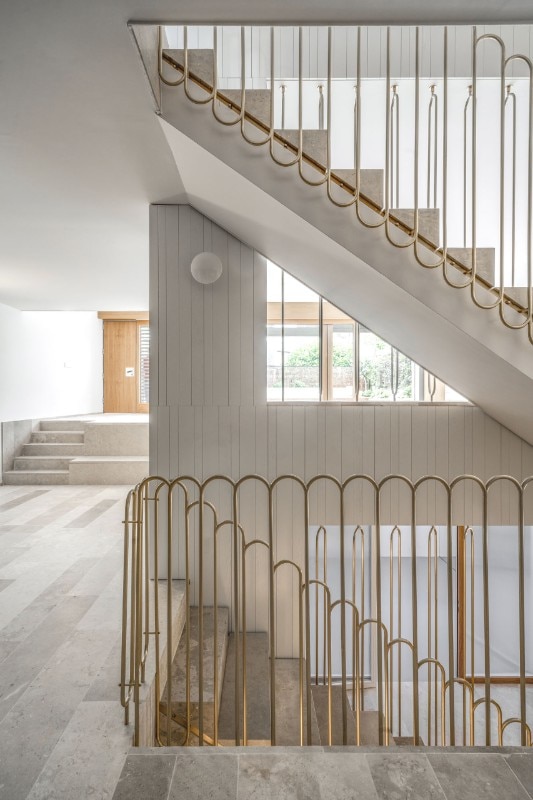
To ensure that the "reborn" dwelling can also aim to a minimum ecological impact, special measures have been taken to reduce energy consumption, from the study of natural cross-ventilation flows, to the performance improvement of the external envelope and fixtures, to the use of thermal solar panels and adjustable external shading systems.
- Project:
- Hybrid habitat spaces. Casa No. 1
- Architectural project:
- Estudio Pachón–Paredes
- Location:
- Madrid, Spain
- Completion:
- 2021


